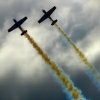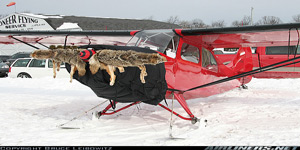I suppose first and foremost is where to fly, and what in. When I learnt to drive, we were careful to choose a tutor vehicle that was a close match to the car I would drive after I had passed (in terms of performance and size... The lime green colour was only for the purpose of learning though
 ). Now being only 18 years of age, I'm not really in the position to be buying an aircraft. That all said and well, I would love to be flying a low-winged aircraft, with a strong preference on a center stick for control, instead of a yoke. It just feels very instinctive to me like that. Current options seem to be a Grob 115, or a Diamond DA-20 or something along those lines. What else should I keep an eye out for? Typical learner aircraft typically include the Cessena 150 and PA-38 .
). Now being only 18 years of age, I'm not really in the position to be buying an aircraft. That all said and well, I would love to be flying a low-winged aircraft, with a strong preference on a center stick for control, instead of a yoke. It just feels very instinctive to me like that. Current options seem to be a Grob 115, or a Diamond DA-20 or something along those lines. What else should I keep an eye out for? Typical learner aircraft typically include the Cessena 150 and PA-38 .Should I focus on finding an airfield that has a particular runway surface? I would like to fly tarmac runways in the future, but is that a major thing to look out for now? A lot of places have grass.
What will I need to buy to be able to fly? I have a pair of sunglasses all sorted already! Things like headsets, charts, general equipment, etc. What will I need?
The nearest airfield to me would be Arclid, with the Cheshire Microlight flyers. Is there any way to get some hours on their fixed wing microlights, then convert up to get the JAR-PPL? It would greatly reduce travel costs.
My nearest aerodromes include: Arclid, Sleap, Cosford, Manchester Barton, Liverpool and Hawarden. Of notable mention, Shoreham seem to offer a decent course, and my sister lives in Long Beach, in California. So there would be an interesting option!

My uncle is a retired RAF officer, so I'm hoping his service number is still valid and that they may accept it for family discounts too.
So any advice would be useful.
Cheers.





 People Eating Tasty Animals.
People Eating Tasty Animals.


